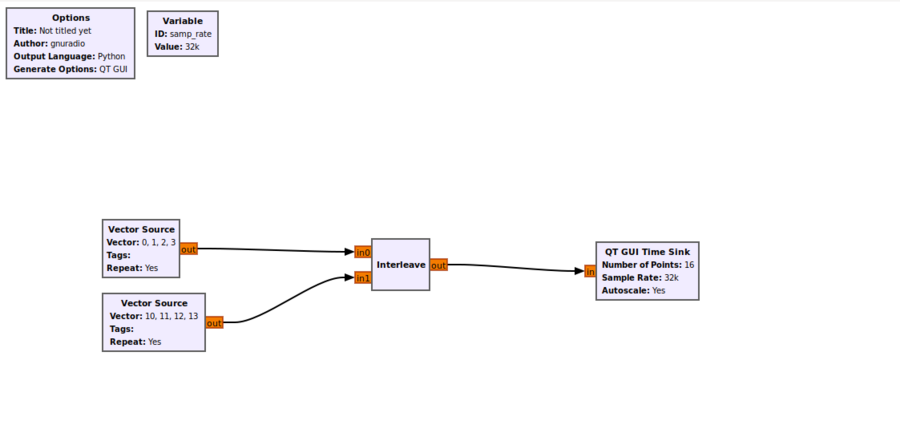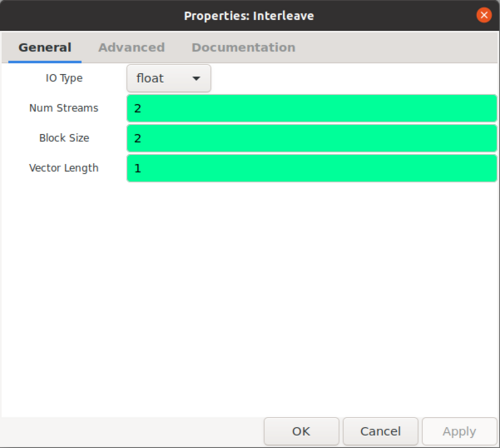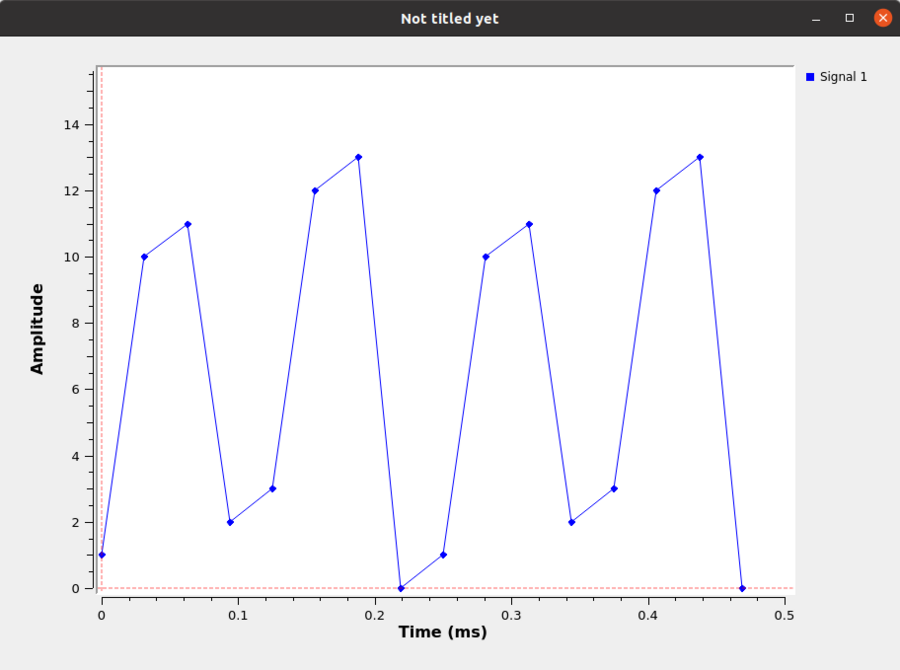Interleave
Interleave N inputs into a single output
This block interleaves blocks of samples. For each input connection, the samples are interleaved successively to the output connection.
This block can also be viewed as a special case of the Patterned Interleaver in which the pattern is defined by a block size and always goes in sequential order. For example, a Patterned Interleaver block with a pattern 0, 0, 1, 1, 2, 2 would be the equivalent of this block with BlockSize=2, Num Streams=3.
Parameters
- Num Streams
- Total number of input ports
- Block size
- Number of items from one input to output before switching to the next input
- Vector length
- Number of samples in a vector item
Example Flowgraph
Below is a simple flowgraph example interleaving two vector sources:
The block properties are set for block size 2 so it passes two outputs from a given vector source before switching.
For this example that means the output begins with: 0, 1, 10, 11, 2, 3, 12, 13, 0, 1, .... The output is graphed below using a QT GUI Time Sink Block with a positive slope trigger. This is why the output displayed begins at 1 instead of zero.
Source Files
- C++ files
- [1]
- Header files
- [2]
- Public header files
- [3]
- Block definition
- [4]


